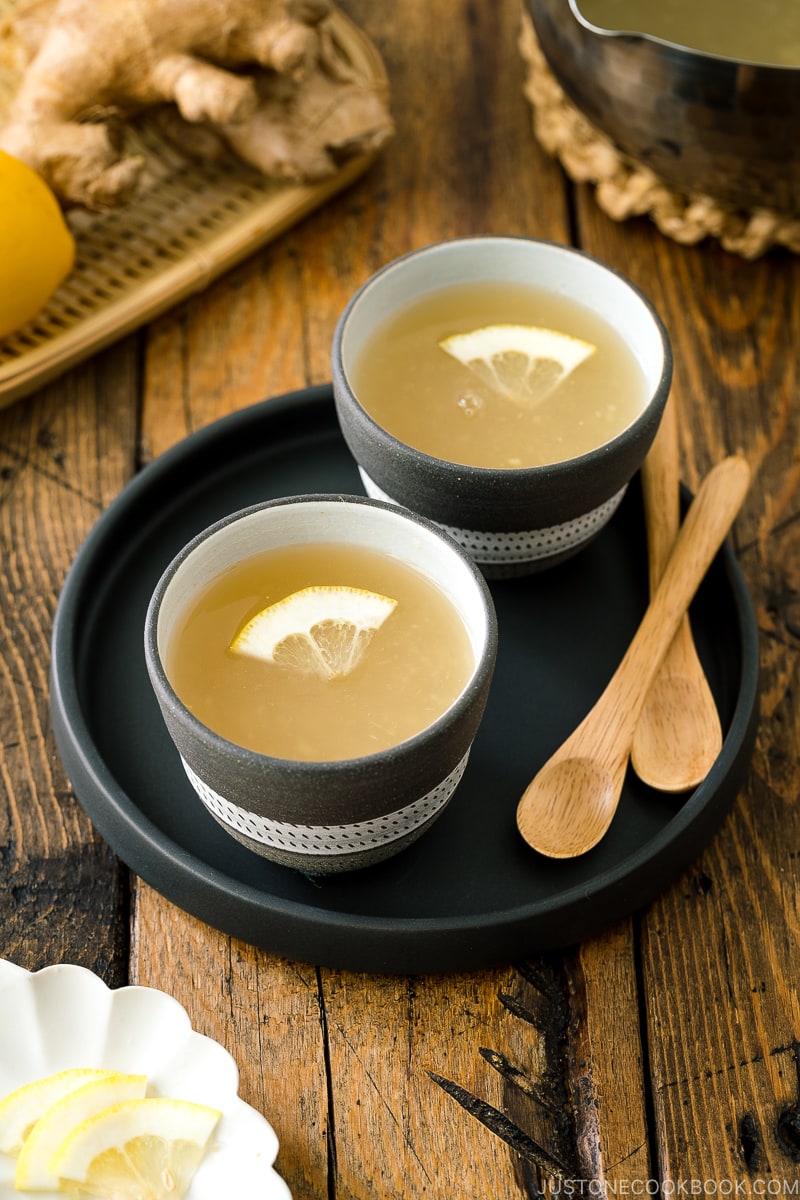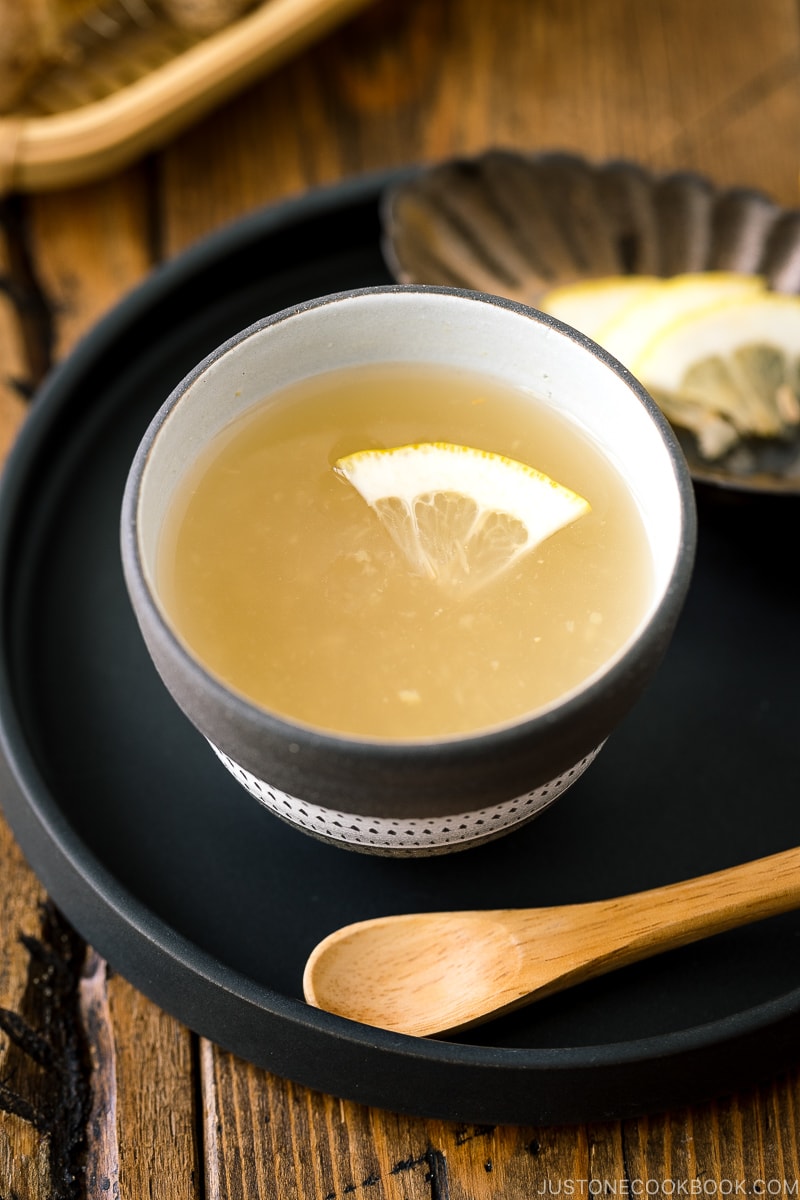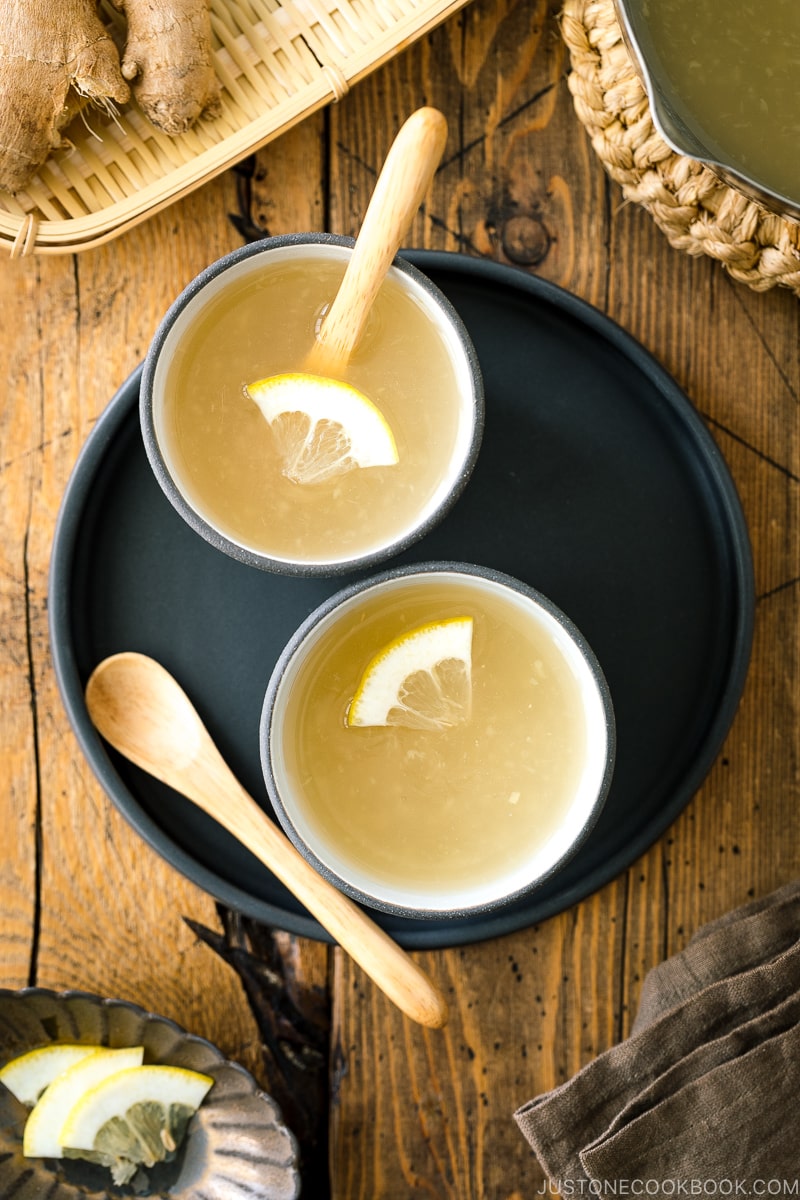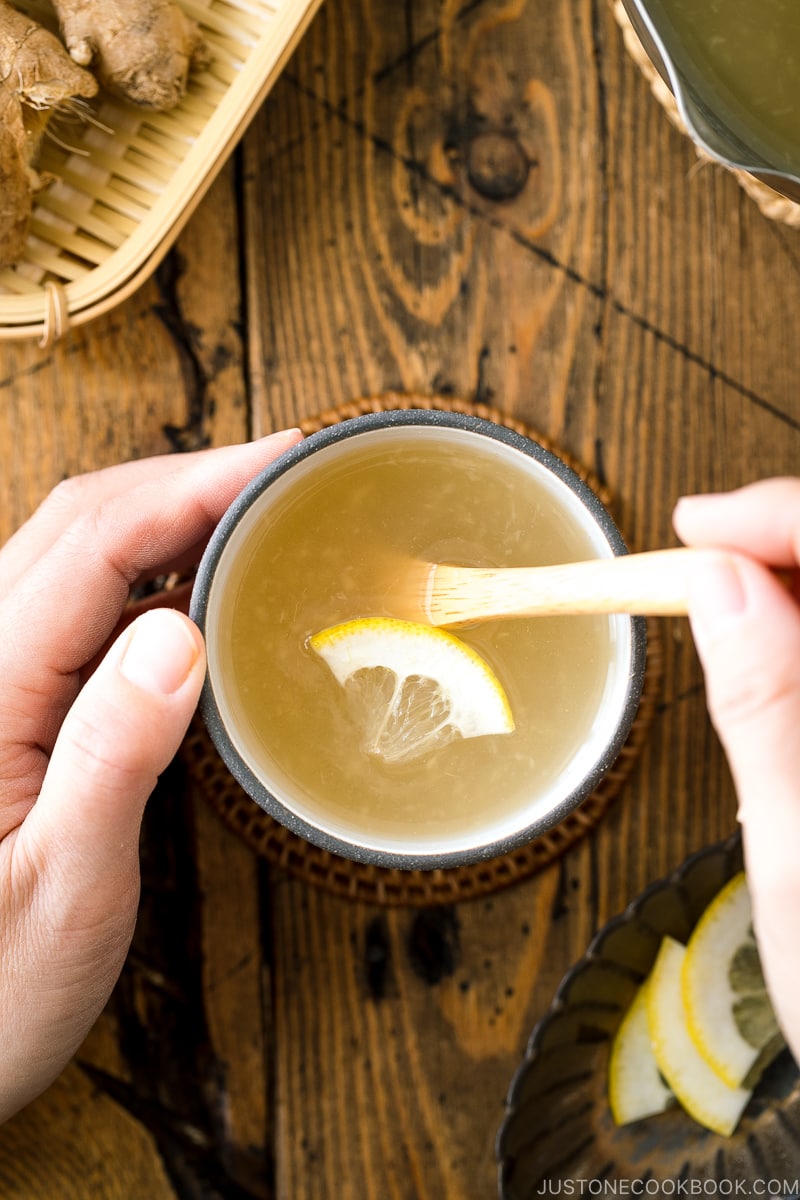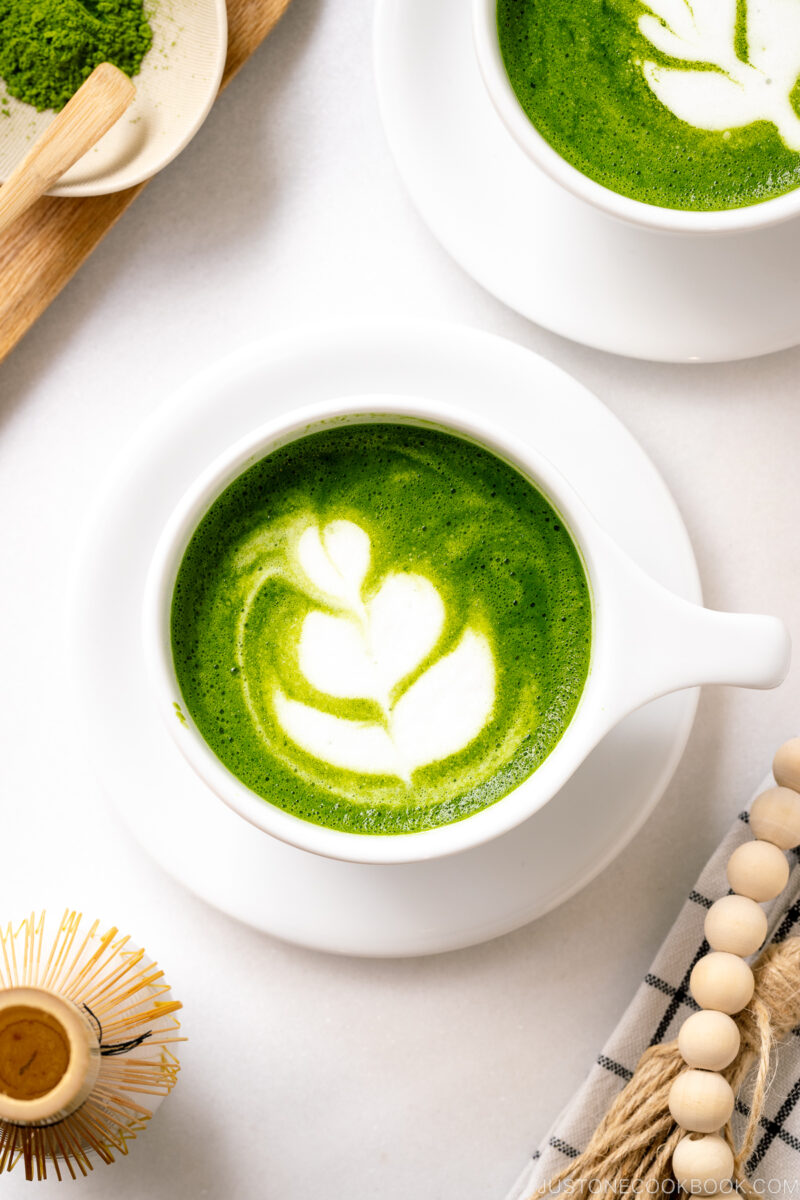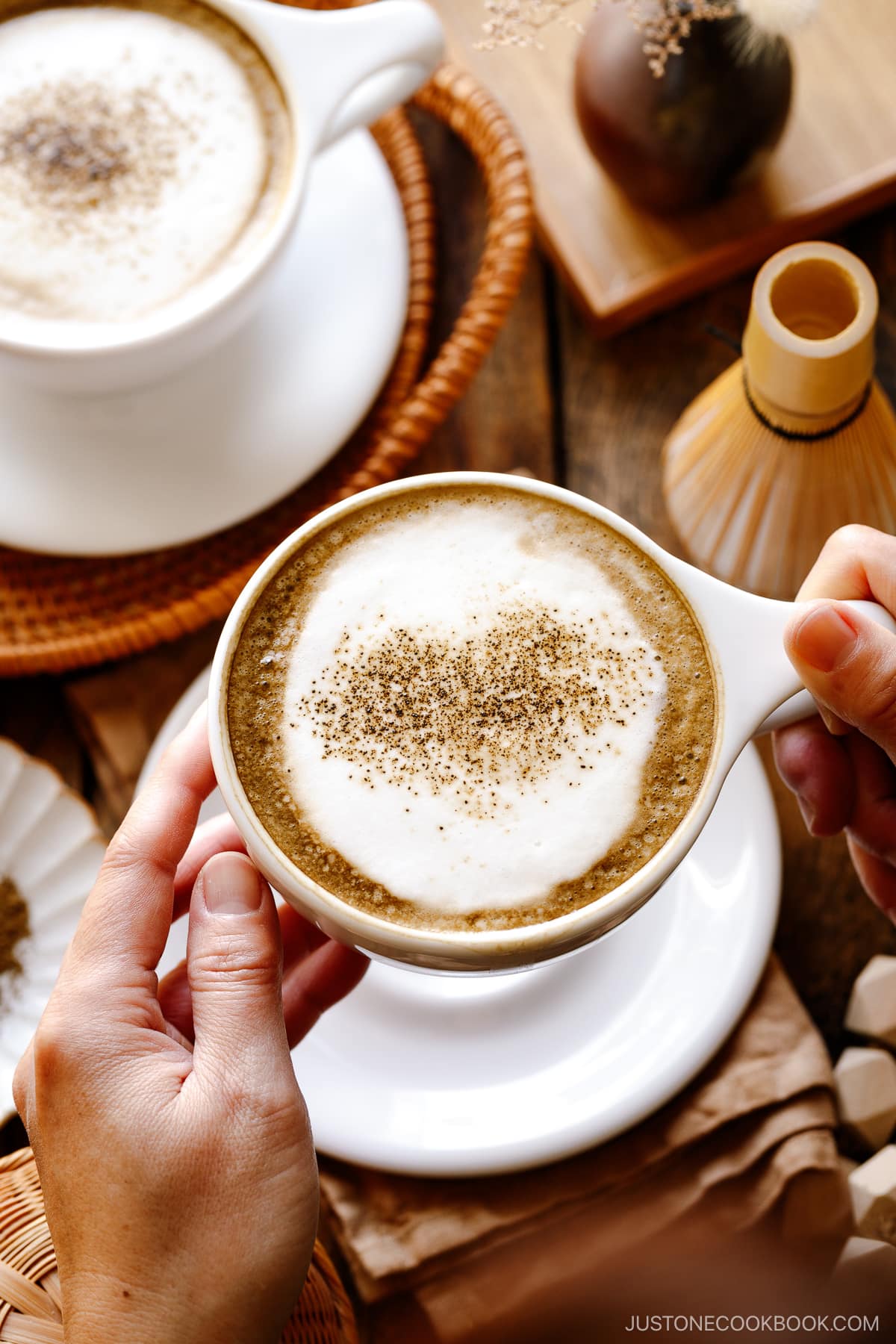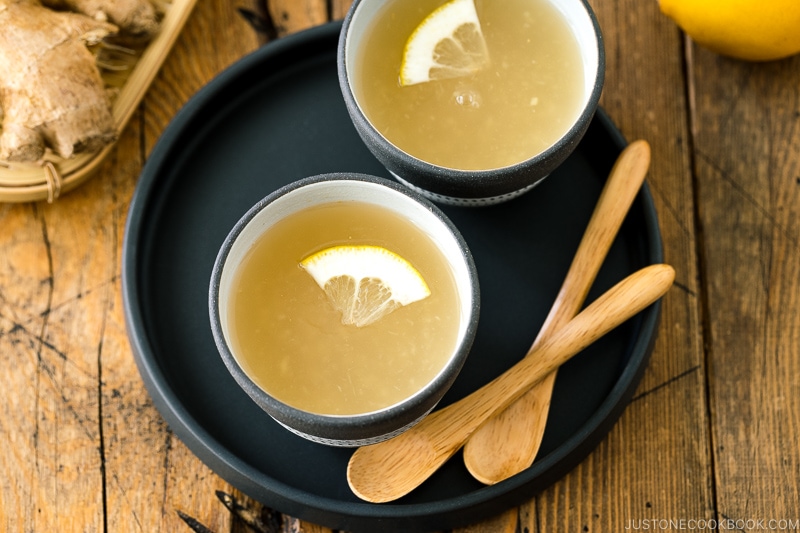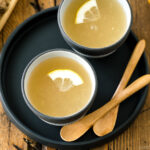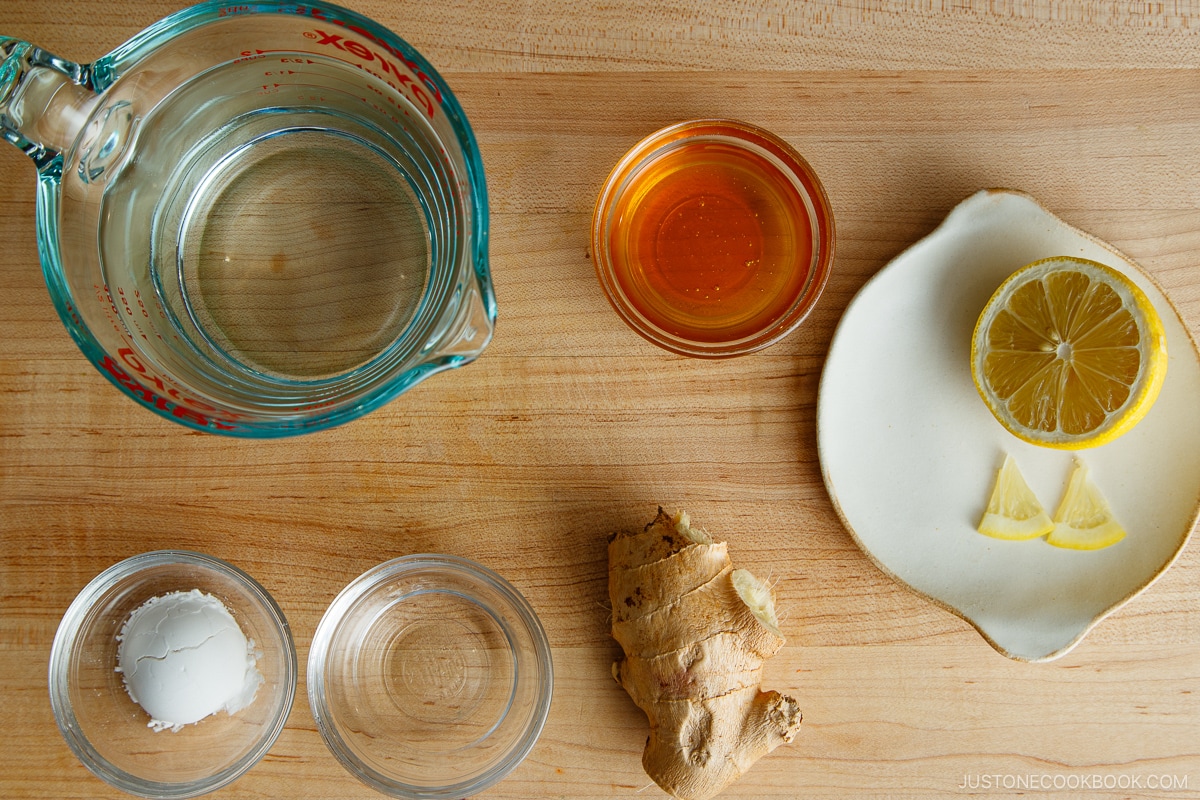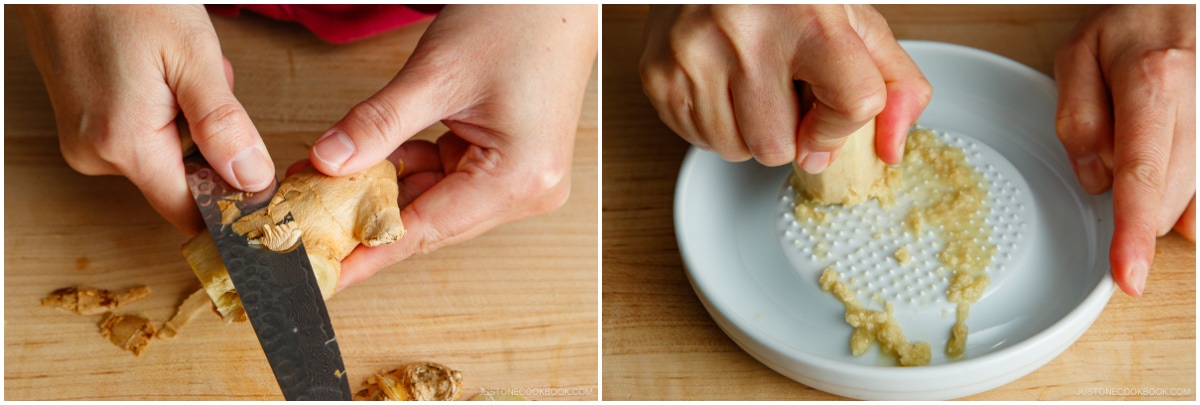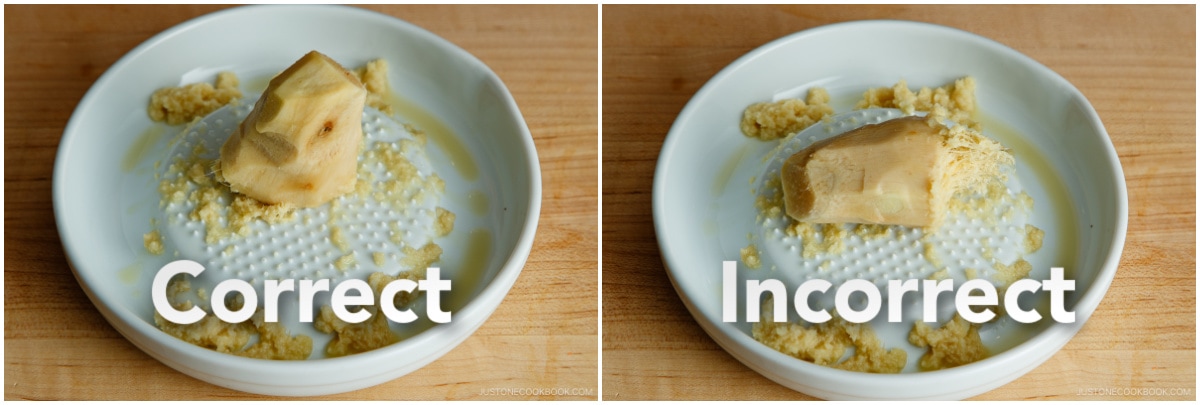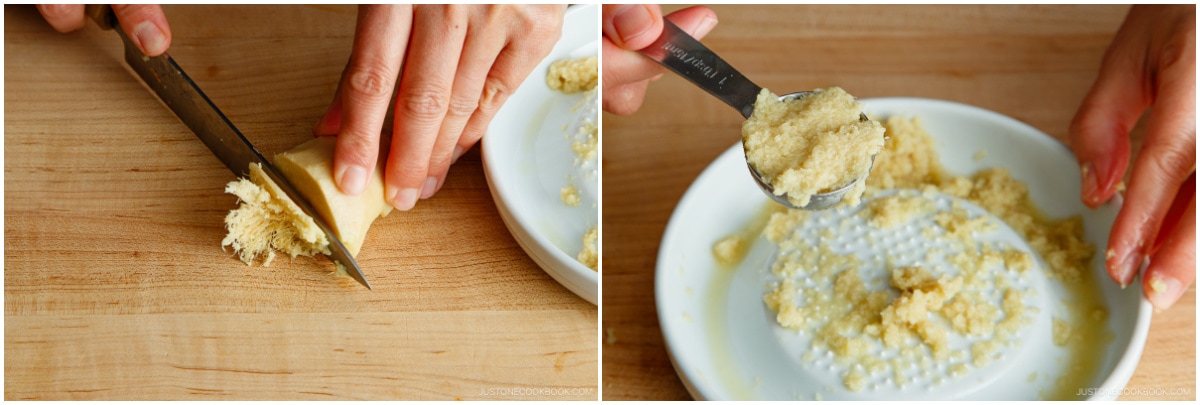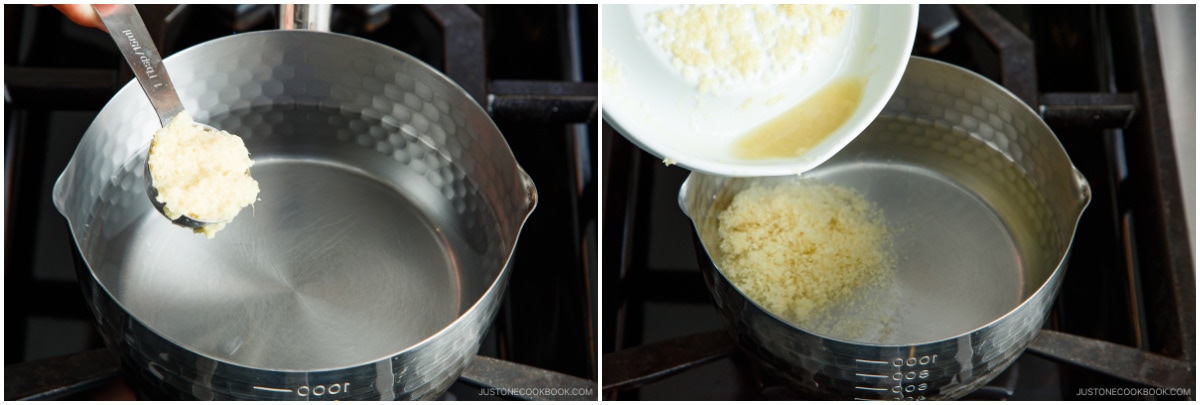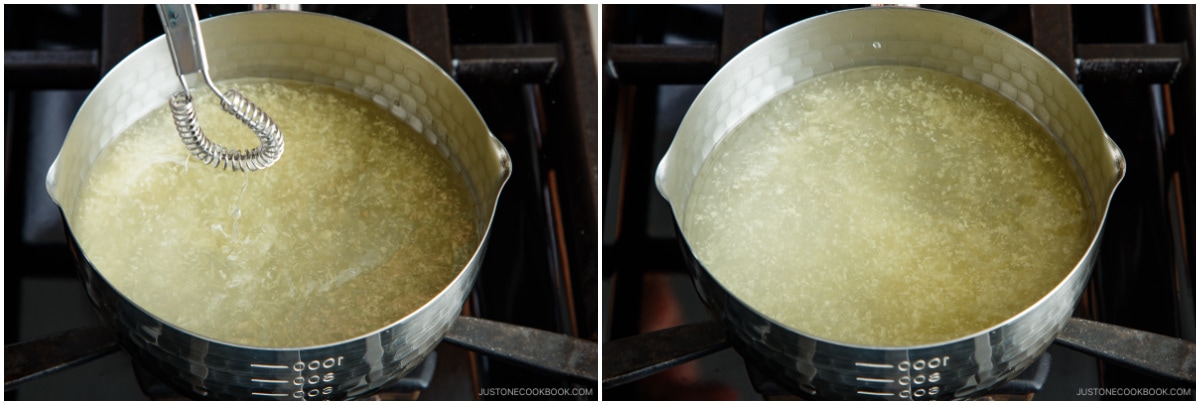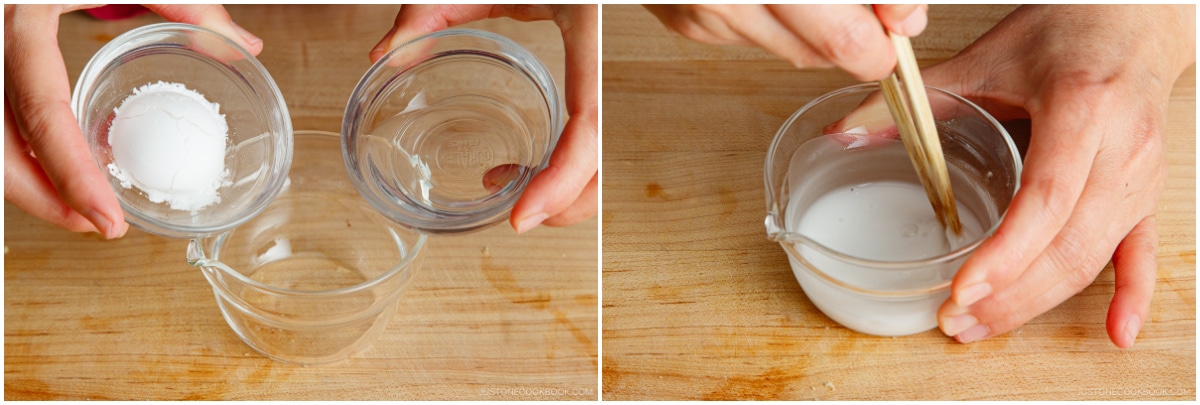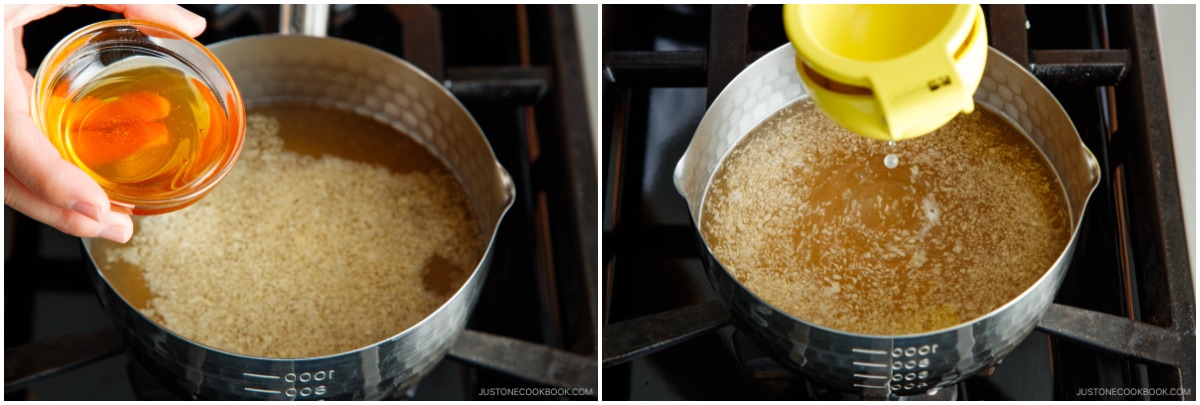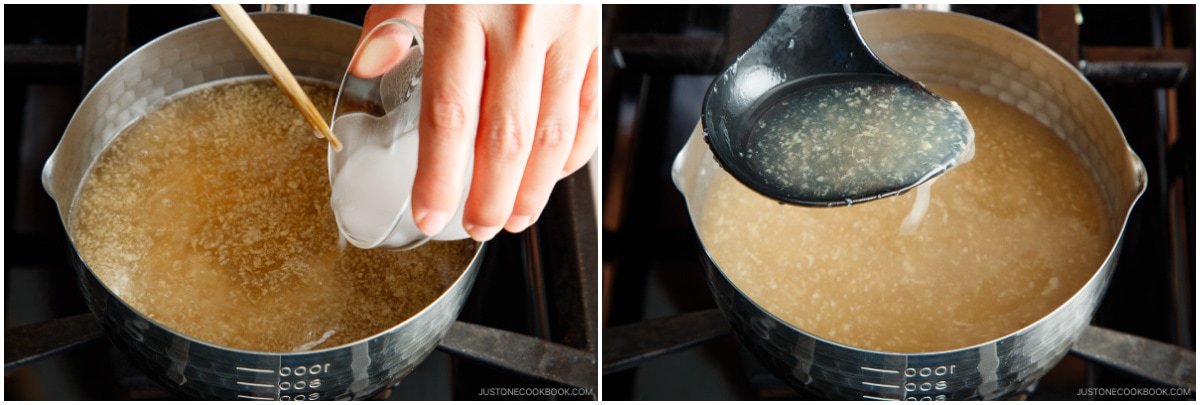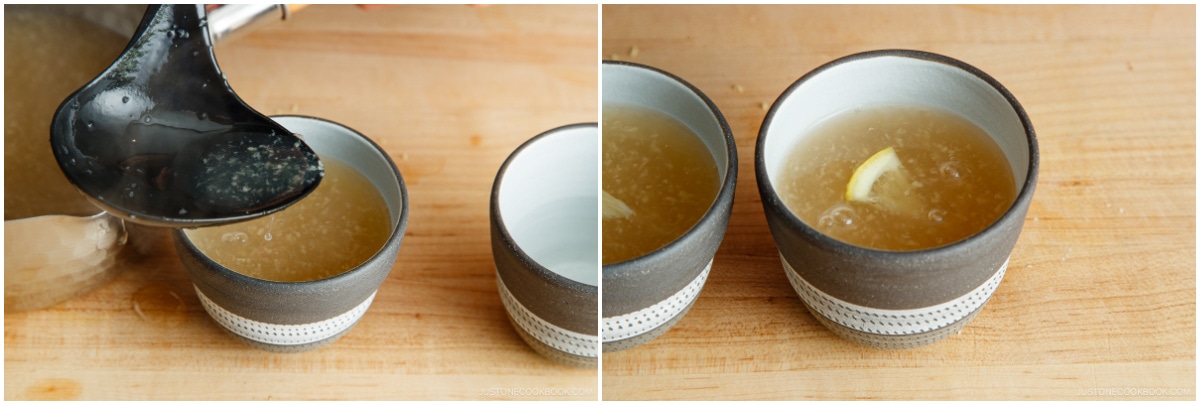During the frigid winter months when cold and flu are rampant, I am reminded to take good care of my family by cooking the right kind of food. One of my favorite wellness traditions is to make a big pot of shōgayu (生姜湯)— honey ginger tea. This soothing tea with a spicy kick is known for its ability to warm up the body and keep the cold at bay.
What is Shōgayu?
Shōgayu (生姜湯) translates to ‘ginger hot water’ and is a simple tea made by steeping ginger in hot water and sweetening it with honey. It is also a popular home remedy in Japan, passed down for generations to fight off common colds.
What Makes Ginger Tea Healthy?
It is the active compound found in ginger called gingerol that gives the rhizome both its spicy bite and its medicinal properties. You will feel the immediate warming effect by drinking a strong cup of ginger tea. This is why ginger tea has been used as a traditional cold remedy throughout Asia for hundreds of years.
More Health Benefits of Ginger Tea
Proven in both Asian and Western medicines, ginger can help strengthen the immune system and fight inflammation. Besides treating colds, drinking ginger tea can also offer benefits such as:
Soothing a sore throat and suppressing a cough Boosting circulation Settling an upset stomach Preventing motion sickness and nausea, without the side effects of drowsiness Lowering cholesterol and blood pressure
5 Ingredients You’ll Need
Ginger – Considered a spice, ginger is a rhizome of a flowering plant that we use for cooking. The knobby underground stem has thin tanned skin with yellow or cream-colored flesh. When harvested early, young ginger is tender and has a juicy and mildly sweet flavor. Mature ginger is fibrous and tough, with a sharp, spicy taste. I usually use mature ginger for my shogayu.
Water or tea – I often keep mine simple by using just plain filtered water, but you can change it up by adding tea leaves like green tea or black tea.
Honey (or your choice of sweetener) – You can leave out any sweetener if you prefer, but I do enjoy adding a little honey when I make shogayu. Honey helps to neutralize the spiciness and makes the tea more appetizing. As we all know, honey has its health properties and can help to soothe the throat. The kids will have no excuse not to drink it too! Tip: If you want to keep the full benefits of the honey, add honey once the tea has cooled to 122°F or 50°C as a high temperature can kill the enzymes and antioxidants in the honey.
Citrus (optional, but recommended) – Citrus fruits such as lemon, yuzu, Meyer lemon, or orange not only add a touch of fragrance to the tea, but they are also packed with Vitamin C. If you want to double up the benefits of the tea, I highly recommend adding it. You can either add a squeeze of the citrus juice and/or the zest. I usually use freshly squeezed lemon juice.
Potato starch or cornstarch (optional, but highly recommended!) – Some Japanese people, including myself, like to add starch to their shogayu as it helps to thicken the tea and retain the heat. Mr. JOC had ginger tea before he met me and gave me a suspicious look when I mentioned my ginger tea with starch. After he tried my ginger tea, he liked this style. I’ll tell you more about the benefits of adding starch below.
How to Make Honey Ginger Tea (Shogayu)
Why Adding Potato Starch (Cornstarch) to Shogayu?
I assume the majority of you have your ginger tea without starch. That’s a more common way to enjoy it in Asia. Why do we add starch to the ginger tea? Let me share the three benefits!
3 Important Tips to Remember
Hold the peeled ginger root so the fibers are perpendicular to the grater. The fibers in ginger run from the top to the bottom of the root. If you grate from the top or the bottom, grated ginger will not include many fibers, and your grater won’t clog. If the ginger has too much fiber, slice off the fibers with a knife before continue grating.
Use cold water to make a slurry. Warm or hot water will immediately thicken the mixture. The water-to-starch ratio is 1 to 1. Make sure to mix well right before you add the slurry because starch tends to suspend at the bottom of the slurry.
Be careful when you reheat thicker ginger tea as it may splatter. Heat concentrates more easily in a viscous liquid, which allows steam vapor to expand until it is large enough to explode and make a mess.
Frequent Asked Questions
How long do you steep ginger? The longer you steep the ginger in the simmering water, the stronger and spicier it will taste. For my ginger tea, I bring the tea to a simmer, and that’s good enough, but feel free to adjust as you like. If you cook for a longer time, reduce the amount of the starch by half as more water has evaporated. Can I skip honey (or lemon)? Yes, they are optional. I recommend making it with honey (or lemon) for your first try, and you may skip it later if you don’t like it. Plain ginger tea without honey is quite strong. My ginger tea is too thick. What do I do? It’s possible that moisture continued to evaporate from the leftover ginger tea in the pot. If your ginger tea is thicker than what you like, add water, mix really well, and reheat. How long does ginger tea last? If you make a big batch, you can store it in the refrigerator overnight; however, I recommend consuming it soon. If the tea has gotten too thick, add water when you reheat.
The Elixir to Sip Shogayu All Winter or All Year Long
If there is one drink that can help boost your mood and health during the winter, this is it! Down with a cold, stomach flu, or sore throat? Have a few hot cups of ginger tea (in addition to other necessary treatments, of course). It is a sure way to reduce the symptoms! I even know some people who drink ginger tea all year long and credit it for their youthfulness and good health!
Other Healthy Drinks You’ll Enjoy
Matcha Latte Buckwheat Tea (Sobacha) Green Tea: A Century Old Japanese Drink for Better Health Hojicha Latte or Cold Brew Hojicha Green Tea Smoothie
Wish to learn more about Japanese cooking? Sign up for our free newsletter to receive cooking tips & recipe updates! And stay in touch with me on Facebook, Pinterest, YouTube, and Instagram. Editor’s Note: This post was originally published on January 19, 2022. It was republished with a new video on February 9, 2024.
